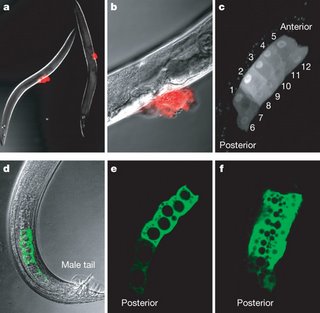|
Thursday, July 17, 2008
 Model organisms are models for a number of reasons: they're relatively easy to work with in the lab, or there are a lot of experimental tools available, or maybe even simple interia. But given that they're models and various neat mutagenesis assays are available for toying around with them, people often forget that even model organisms often show a massive amount of natural variation. There's a reason to map this natural variation over variation due to mutagenesis: it's been visible to selection, and so may highlight key nodes of networks that are open for adaptive (or neutral change). Model organisms are models for a number of reasons: they're relatively easy to work with in the lab, or there are a lot of experimental tools available, or maybe even simple interia. But given that they're models and various neat mutagenesis assays are available for toying around with them, people often forget that even model organisms often show a massive amount of natural variation. There's a reason to map this natural variation over variation due to mutagenesis: it's been visible to selection, and so may highlight key nodes of networks that are open for adaptive (or neutral change). A beautiful example of this has just been published in an elegant paper in Nature, in the nemotode C. elegans. In some strains of this species, after a male mates with a hemaphrodite (males are rare, and most reproduction occurs via selfing), it deposits a "copulatory plug" that decreases the fitness of those males that follow him (stained red in the figure on the right). In other strains, there's no such plug. So a natural question is: what's the genetic basis for this phenotype, and what is its evolutionary history? First, the answer to the first question: the authors map the trait to a retrotransposon insertion into a previously unknown gene. This gene share homology with the mucins, and is specifically expressed in around 12 cells of the male vas deferens (in green on the right). Personally, I never cease to be amazed by the discovery of new genes in sequenced model organisms, but it's happened so much that perhaps I should get used to it. The authors then go on to show that strains that express the plug overlap in their ranges considerably with strains that don't. This suggests little fitness effect of the retrotransposon insertion, and this seems to make sense--C. elegans evolved from a species with obligate male=female reproduction (where presumably the plug was advantageous) to a species where most reproduction is by selfing (where a plug is likely more neutral). Overall, a really nice story. Labels: Genetics |



